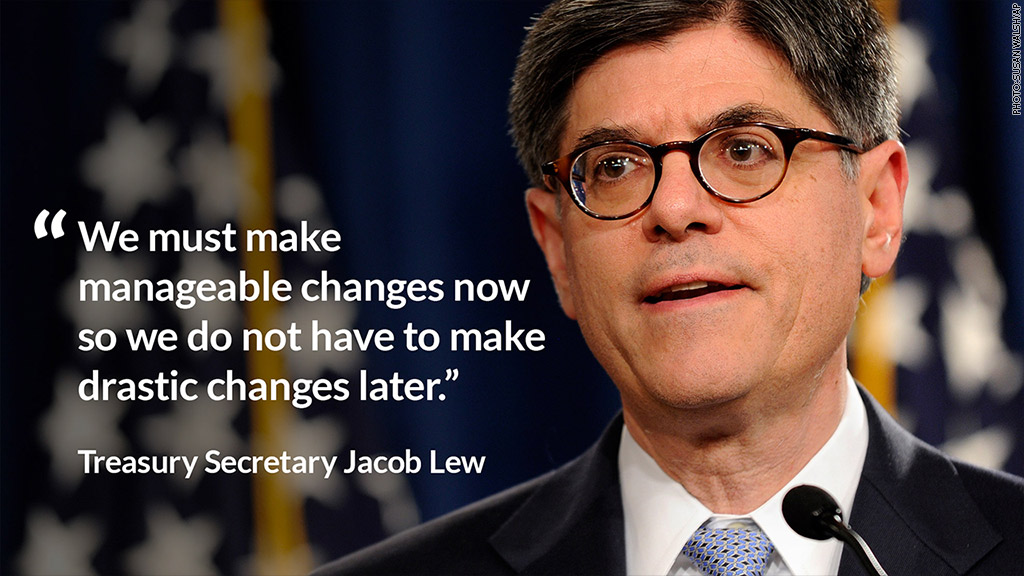
The long-term prognosis for Medicare has improved thanks to slower health spending, while the outlook for Social Security remains unchanged.
That's according to the annual report from the trustees of both entitlement programs released on Monday.
"[T]he pressure on our social insurance programs is growing, and we must make manageable changes now so we do not have to make drastic changes later," Treasury Secretary Jacob Lew said.
On Medicare, the trustees now project that the trust fund for Part A, which covers hospital costs for seniors, will run dry by 2030. Thereafter, it would only be able to pay out 85% of projected benefits -- a figure that would fall to 75% by 2050.
That's an improvement of four years over last year's projection. And it's an improvement of 13 years since 2009, before health reform was passed. But three trustees noted that it's not clear how much of the spending slowdown is due to the Affordable Care Act, the weak economy and other changes that have lowered use of medical care.
While the slowdown is welcome news, it's not an indication that Medicare will cure its financial problems on its own, public trustee Robert Reischauer said.
"Medicare spending is still projected to grow faster than workers' earnings, retirees' income [and] GDP," Reischauer said. "The sooner lawmakers face reality the better."
If Congress wanted to raise taxes to close the program's 75-year shortfall, the increase needed would be a little less painful than the trustees estimated a year ago: They now say the 2.9% Medicare payroll tax would have to go to 3.77%.
The Medicare payroll tax applies to all wages and some investment income.
In terms of Social Security, the trustees project the program's trust fund will run dry by 2033, the same as last year.
After that point, barring any changes, the program will only receive enough in payroll taxes to pay 77% of promised benefits through 2088.
Closing the long-range shortfall in Social Security would require the equivalent of either immediately raising the Social Security tax to 15.23%, up from 12.4% today; or immediately cutting benefits by 17.4%. The Social Security tax currently applies to the first $117,000 of one's wages.
Of most immediate concern is the Social Security Disability program. By late 2016, unless changes are made, the program will only be able to pay out 80% of scheduled benefits, the trustees said.
Roughly 8.8 million disabled workers receive payments, as well as family members of some of the disabled. The average monthly payment for a disabled worker is $1,146.
One quick-fix option to bolster disability funding is to reallocate payroll taxes away from the retiree benefit portion of Social Security. Of the 12.4% workers and employers pay into Social Security, 1.8% is earmarked for disability. Lawmakers could, for instance, increase the share going to disability for a few years.
Or Congress could choose to raise the disability tax rate or curb disability payments.
But the most likely option, Lew said, is that Congress will temporarily reallocate some payroll taxes, which is what's been done in the past when the disability trust fund was on the edge.


